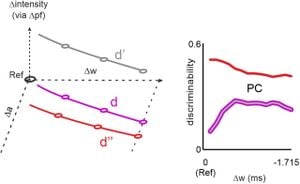The study investigates the mechanical, structural, electronic, magnetic, and thermomagnetic properties of the full-Heusler alloy Fe2Mn1−xSix using density functional theory (DFT) and Monte Carlo simulations. Researchers have examined the effects of silicon doping on this material, finding significant insights for its applications, particularly in spintronics.
Half-metallic materials such as the full-Heusler Fe2Mn1−xSix alloys are known for their unique electronic structure, which allows for high levels of spin polarization—a property desirable for next-generation spintronic devices. By systematically varying the silicon concentration from 0 to 1, this study elucidates how these alloys transition between states and how doping impacts their structural and magnetic characteristics.
The research confirms the L21 prototype structure of the alloys, which exhibited remarkable stability across different silicon concentrations. The computational models employed DFT calculations through the Wien2k package and integrated Monte Carlo simulations to estimate various properties, including the Curie temperature and elastic moduli.
According to the results, as the silicon content increases, there’s not only a decline in the lattice parameters but also noticeable enhancements in the mechanical properties—specifically, the bulk and Young’s modulus, Poisson's ratio, and linear compressibility improved with higher silicon levels.
“The structural stability of the system and the existence of the L21 prototype structure were demonstrated,” the authors remarked, emphasizing the reliability of their findings. The alloys were shown to remain half-metallic under various conditions, bolstering their candidacy for application within spintronic devices.
Another standout finding was the Curie temperature range obtained through simulation, spanning from 215 K to 490 K, indicating improved thermal stability of the magnetic state across different compositions.
This wide temperature range for Curie suggests the materials could function effectively at room temperature, making them suitable for various practical applications. The study projects the Fe2Mn1−xSix alloys as strong candidates for magnetic storage devices alongside spintronic applications, where maintaining high spin polarization at practical temperatures is imperative.
The electrical and magnetic properties indicate promising avenues for future exploration as industries seek to reduce energy losses and improve efficiency. The impact of this study highlights the cascade of benefits provided by manipulating the silicon concentration within the Heusler alloy framework.
“The upward direction indicates an improvement in the overall stiffness and elasticity of the material,” the authors conclude, encapsulating the core findings of their multifaceted research.
Research such as this not only furthers the scientific community's grasp of Heusler alloys but also opens pathways to innovative designs and technologies, laying groundwork for next-generation electronic devices.



